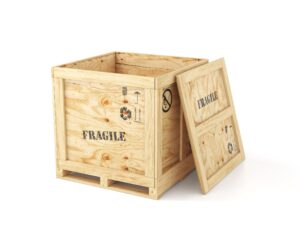How to build wooden crates for shipping is a practical skill that combines basic carpentry with customization options to meet specific needs. The process begins with planning and measuring the item to be shipped, adding extra space for padding. This step ensures the crate will be appropriately sized, providing both protection and ease of packing. The materials required include wooden boards (plywood or solid wood), nails or screws, wood glue, and optional finishing materials like paint or sealant. Essential tools include a saw, hammer or drill, measuring tape, and safety gear such as gloves and goggles.
How to build wooden crates, once you have your materials and tools ready, the first step is to cut the wooden boards to the required dimensions for the four side panels, bottom panel, and top panel. Precision in cutting is crucial, as it ensures that the pieces will fit together snugly, providing structural integrity to the crate. After cutting, assembling the side panels into a rectangular frame using wood glue and reinforcing with nails or screws is the next step. Ensuring the corners are square is vital for the stability of the crate. The bottom panel is then attached similarly, and corner braces can be added for extra strength. The top panel can either be fixed permanently or designed to be removable, depending on the specific needs of the shipment.
Finishing touches include sanding any rough edges and optionally painting or sealing the wood to protect against moisture and wear. Labeling the crate clearly for shipping is an essential final step. Testing the crate with some weight inside to check for sturdiness ensures that the crate is ready for use.

There are several pros and cons to building your own wooden crates. One of the significant advantages is the ability to customize the size and shape to fit specific items, ensuring optimal protection. Building your own crates can also be cost-effective compared to purchasing pre-made crates, especially for non-standard sizes. Additionally, using quality materials and construction techniques can result in a highly durable and reliable shipping container.
However, there are some downsides. The initial setup of gathering materials and tools can be time-consuming and might require an investment if you do not already own the necessary equipment. Building crates also requires a certain level of skill and precision, and mistakes can lead to wasted materials and compromised structural integrity. Moreover, the process can be labor-intensive, especially if multiple crates are needed. Finally, without proper finishing, wooden crates can be susceptible to environmental damage like moisture, which could compromise the safety of the shipped items.
In summary, how to build wooded crates for shipping involves careful planning, precise cutting, and thorough assembly. While it offers customization and potential cost savings, it also demands time, effort, and a degree of woodworking skill. Balancing these pros and cons can help determine whether building your own crates is the right choice for your shipping needs. As a crating company we are here to help with any of your crating needs. Please call for a quote 602-244-0550.








